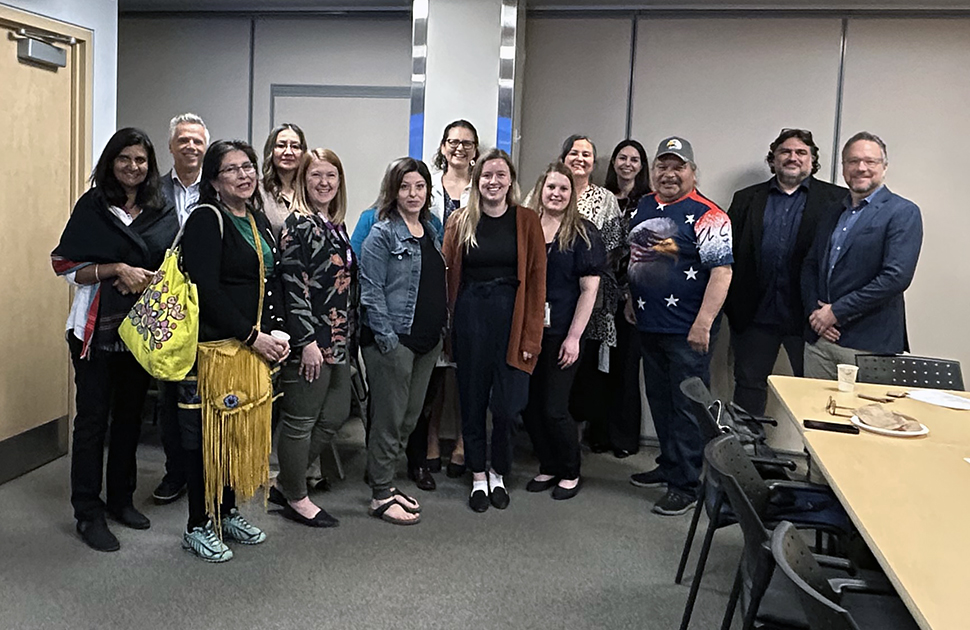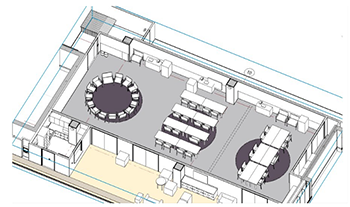
CHEO is highlighting its engagement with First Nations, Inuit and Métis communities featuring different perspectives from various Indigenous partners.
This article features a conversation with Anita Tenasco, Kitigan Zibi Anishinabeg, on CHEO's new Integrated Treatment Centre.
The new CHEO Integrated Treatment Centre has engaged First Nations, Inuit, and Métis partners to ensure the building, spaces and care are welcoming and inclusive for everyone.
The treatment centre, set to open in 2028, will improve care and increase access to services for children and youth living with complex medical, developmental, behavioural or mental health needs. It will also be connected by a link to the main hospital building,
With the intent to build ongoing respectful relationships with community leaders, representatives from CHEO met with the Ottawa Aboriginal Coalition in Ottawa and travelled to Kitigan Zibi and Pikwakanagan First Nations to meet with community leaders before engaging them in creative brainstorming sessions — online and at the CHEO campus on Smyth Road.
The sessions were “very meaningful” as CHEO “slowly, carefully and respectfully” engaged with First Nations, says Anita Tenasco, who has taken part as an Anishinabe Algonquin from Kitigan Zibi Anishinabeg.
She said they gave Algonquin voices a chance to “be heard and be present” in the design of the new Integrated Treatment Centre, a 220,000-square-foot building that will include medical clinics, treatment rooms, family support spaces, a school, a preschool and a range of multi-use clinical spaces.
“CHEO is such a critical resource in our community, in our territory, in our region. It’s important that Anishinabe Algonquin people feel and see themselves within the facility, and in fact all First Nations, Inuit and Métis Peoples and children need to feel welcomed and supported by CHEO,” said Tenasco.
 Suggestions included rooms with the infrastructure to support smudging, as well as art that depicts cultural traditions like baby-carrying in Inuit culture, people in traditional Indigenous clothing, as well as the installation of items that resemble the look of cedar and birch.
Suggestions included rooms with the infrastructure to support smudging, as well as art that depicts cultural traditions like baby-carrying in Inuit culture, people in traditional Indigenous clothing, as well as the installation of items that resemble the look of cedar and birch.
Sessions also brought forward the importance of circular gathering areas and circular patterns on floors and ceilings.
Indigenous members who took part in the engagement sessions told CHEO staff that feedback was flexible because they’re “respectful of limitations” that architects and designers face.
Still, the feedback carried a lot of weight as it came from a mix of genders and ages, including elders, to ensure a balanced perspective from First Nations, Tenasco said.
“We are the knowledge keepers in terms of how institutions need to serve Indigenous Peoples. ... They gave us a lot of opportunity to share our thoughts and opinions and voices,” she said.
 That is especially important because this type of input is avital part of reconciliation as institutions work to mend relationships with Indigenous people. The Sixties Scoop, “Indian Hospitals,” residential schools in Canada, and even provincial schools have led to pain and struggle for generations of First Nations, Inuit and Métis people.
That is especially important because this type of input is avital part of reconciliation as institutions work to mend relationships with Indigenous people. The Sixties Scoop, “Indian Hospitals,” residential schools in Canada, and even provincial schools have led to pain and struggle for generations of First Nations, Inuit and Métis people.
Tenasco said the engagement sessions help revitalize languages and cultures and give them value, as well as reconnect Indigenous Peoples with their cultures and traditions.
“It just brings to light parts of our history that are not so positive, but the fact that we're now going to collaborate and do more, and do better, to support Indigenous Peoples is extremely important,” said Tenasco.
Engagement sessions with First Nations, Inuit and Métis communities, including those in the Urban Indigenous community of Ottawa and other regions further away, will shift in focus from building design to the Integrated Treatment Centre Model of Care, which encompasses the delivery of coordinated, person-centred care to achieve the best life for CHEO children, youth and families.
These sessions are also part of a larger commitment at CHEO to the health actions outlined in the Truth and Reconciliation Commission of Canada: Calls to Action.
CHEO is also working to create a First Nations, Inuit, Métis Engagement (FNIM) Framework that will help all of CHEO build a cohesive and sustainable approach to nurturing respectful reciprocal relationships with First Peoples.




